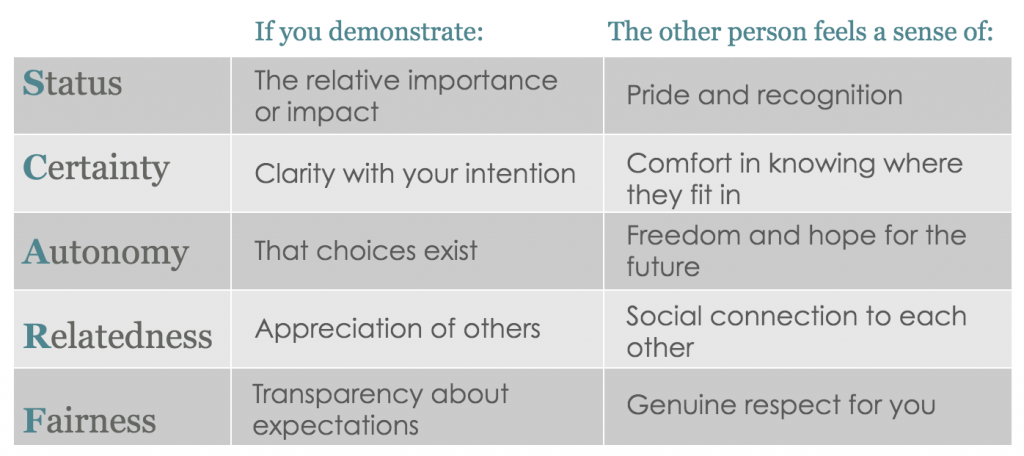Blog
Coaching Moments: Creating Opportunities to Motivate

If you create frequent, brief, mostly positive, coaching opportunities, then your employees are more likely to be highly motivated.
Psychological Safety
It is important for managers to be in touch with their direct reports as individuals and as employees. A coaching relationship allows for this. To be successful, the employee needs to feel psychologically safe when talking with their manager. According to David Rock’s SCARF model for collaborating with & influencing others, managers need to be mindful of these 5 domains: Status, Certainty, Autonomy, Relatedness, and Fairness .
The following table summarizes the SCARF Model:

Coaching Moments
While keeping SCARF in the forefront of your mind, coaching moments are focused on what a manager needs from their employee AND what the employee needs from their manager. Sessions should be structured weekly; scheduled in advance; and limited to 15 minutes. It can be done in person or by phone. These can be done separately or as part of other one-to-one meetings – as long as a portion of the time is devoted to what employees need. Additionally, both parties should be accountable for holding these meetings: employees should be encouraged to confirm and remind the manager of coaching moments. They should also be encouraged to schedule additional coaching moments when needed.
Motivation Mindset
For the coaching moments to truly motivate your employees, use the following approach:
• It’s not about who is right; it is about making a difference
• It is a 2-way dialogue, not a dictate
• Focus on future, not the past
• Ask for and listen to the other person’s ideas
• Try not to prove the other wrong
Process
Follow this structure at every coaching moments session:
• Start with Humble Inquiry using Curious Listening
• Appreciate using Ongoing Regard
• Provide Effective Feedback
• Test Assumptions using The Ladder of Inference
• Provide Clear Expectations
• Deconstruct the Conversation
Questions to Deepen Thinking
• Do you consider yourself a coaching manager?
• What will happen if you make an effort to cultivate psychologically safety for your employees?
• Can you use 1:1 your time with employees differently?
Learn more about S&W Leadership Coaching!